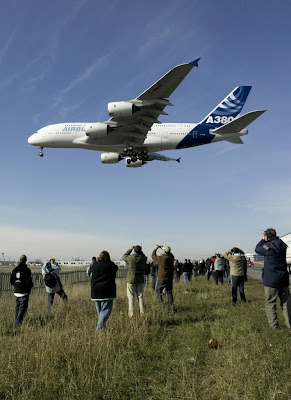The only subject that I still have some questions about is the ATPL, in your book you described in detail every license except that one... I've heard there's no actual in-flight exam to obtain the ATPL but how does a pilot end up obtaining it? Lets say i get a CPL and a job... will the airline finance the ATPL and make sure i pass the exam or once I work up the hours I go to another FTU and pass the ground school + written exam...
That what my only question.
When writing the book, I thought about putting the information regarding the ATPL into a section but instead just briefly mentioned it. At the time I figured that this would be information that student pilots wouldn't need to know for a number years and they'd pick up the information as they progressed through the industry. In retrospect, I should have included a section on it. Although it is true that as a student pilot you don't really need to know about the requirements for at least a couple of years after you've been flying, it's always a good idea to know what you're getting yourself into.
THE ATPL
The ATPL is a different type of licence than most of the other licences. You're required to have it to act as PIC of a two crew aircraft. You can act as a co-pilot of a two crew aircraft if you have the ATPL, have passed the written exams but not met the hour requirements, or if you have a CPL and have passed the IATRA. Another test.
As you mentioned, there is no actual flight test. What is required is that you have to be over 21 years of age, have passed the two written exams within the past 2 years, and have passed a Group 1 (multi-engine) instrument rating within the past year upon meeting the hour requirements and passing the written exams. This can also be done in a Aircraft check ride or type rating flight test which usually will renew a Multi - IFR.
The magic number is 1500 hours. But keep in mind that towards this licence, you can only count half of your co-pilot time. So if you've got 600 hours as a co-pilot, you can only count 300 of those hours towards your licence.
Other hour requirements include:
-900 of those hours must be in an airplane
-250 hours PIC
-100 hours PIC cross-country
-25 hours PIC night, cross-country
-100 hours of night flying
-75 hours instrument time (max 25 in a sim)
When you have approximately half the time required for the licence, you're allowed to write the two written exams:
-The SAMRA which tests Meteorolgy, Radio Aids to Navigation and Flight Planning and,
-The SARON which tests Air Law, Operations and General Navigation
Each of the exams are 3.5 hours long, mulitple choice and you require greater than 70% to pass and are valid for 2 years (i.e. if you don't get meet the hour requirements within two years after writing these exams, you ahve to take them over).
You also have to have your Instrument rating exam passed and not expired.
There isn't a specific ground school requirement for the ATPL. However, there are a number of courses put on for refreshers. Also, there are a few different sample study guides which pilots will study for.
What will normally happen when you're in the industry is that you'll co-ordinate with your airline for a few days off to write the exam. Most people that I know general write one, and then the other a couple months later but it's not unheard of to write both in a row. You'll usually have to pay for the written exams yourself.
The flight test however will usually just be a type rating or PPC renewal with your airline which they should be paying for.
There is a special section in the hours requirements for PIC time. If pilots are flying as co-pilots for an airline that only operates larger aircraft where it is not possible to get PIC time without having an ATPL, they have the potential of gaining 100 of their PIC hours under the 'PIC under supervision' provision. This needs to be worked out directly with the airline though.



 A TCAS display - the diamonds are other aircraft
A TCAS display - the diamonds are other aircraft 
 People gather to watch the Airbus A380 as it makes its first landing at the Pierre-Elliott Trudeau airport, 12 November, 2007.
People gather to watch the Airbus A380 as it makes its first landing at the Pierre-Elliott Trudeau airport, 12 November, 2007. The Damaged Plane. The Circle shows where the engine fell from
The Damaged Plane. The Circle shows where the engine fell from The Engine that fell - Luckily it's not on a house!
The Engine that fell - Luckily it's not on a house! The damage is inspected
The damage is inspected

 JOE BRYKSA / WINNIPEG FREE PRESS ARCHIVES
JOE BRYKSA / WINNIPEG FREE PRESS ARCHIVES
 Cessna C441 Conquest II C-FSKG
Cessna C441 Conquest II C-FSKG Me at the End of my First Day 'On The Line'
Me at the End of my First Day 'On The Line'


